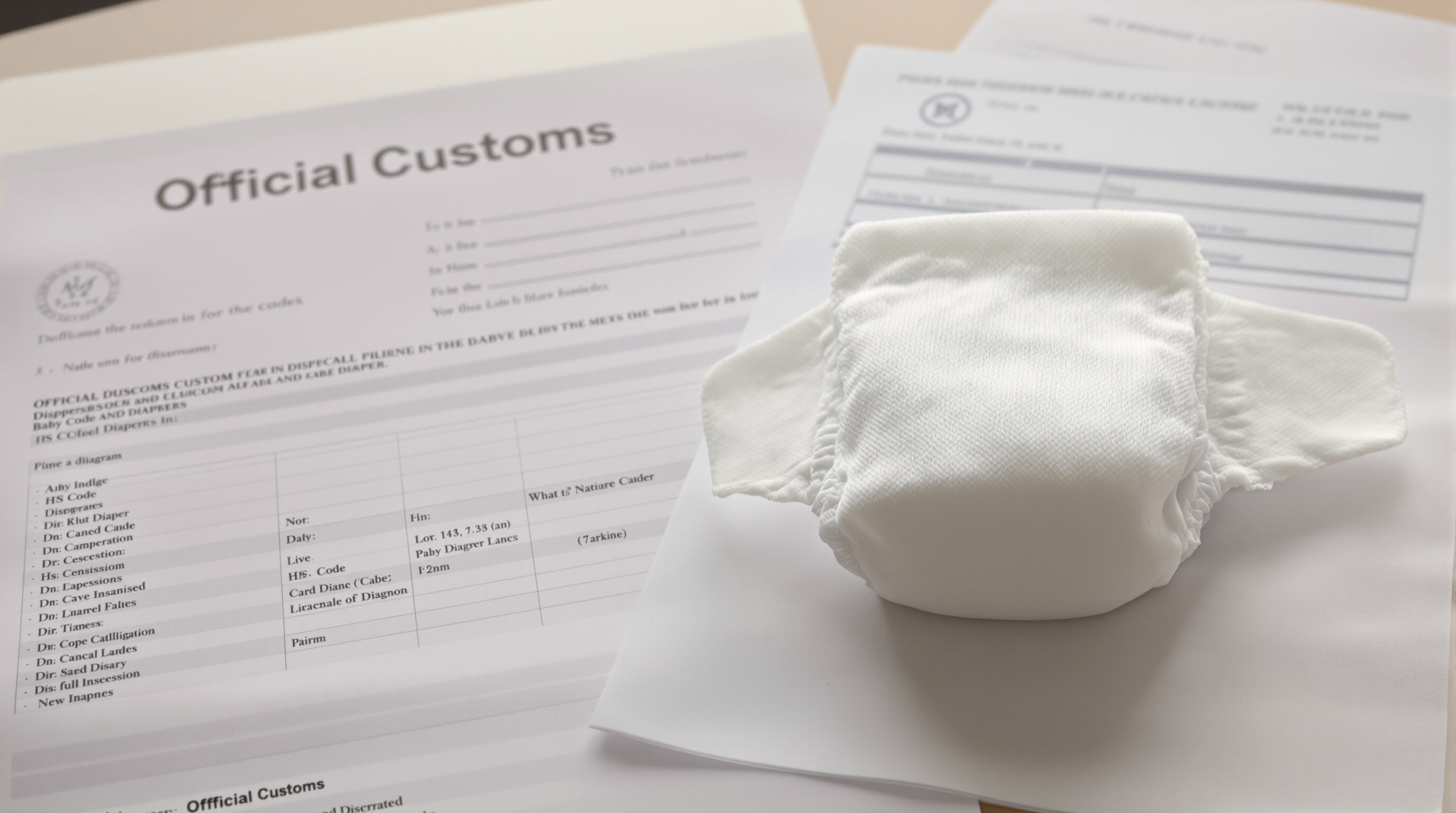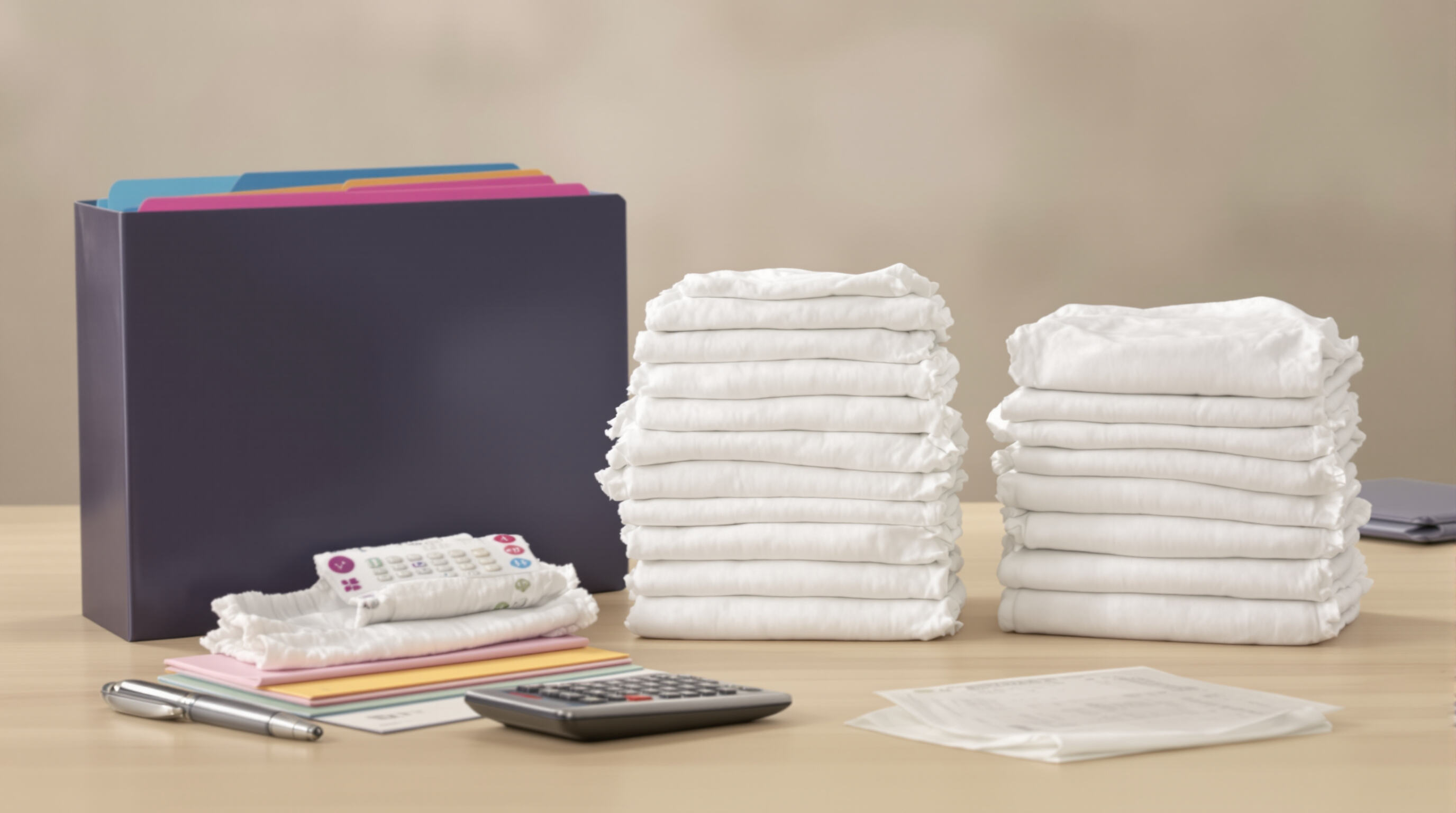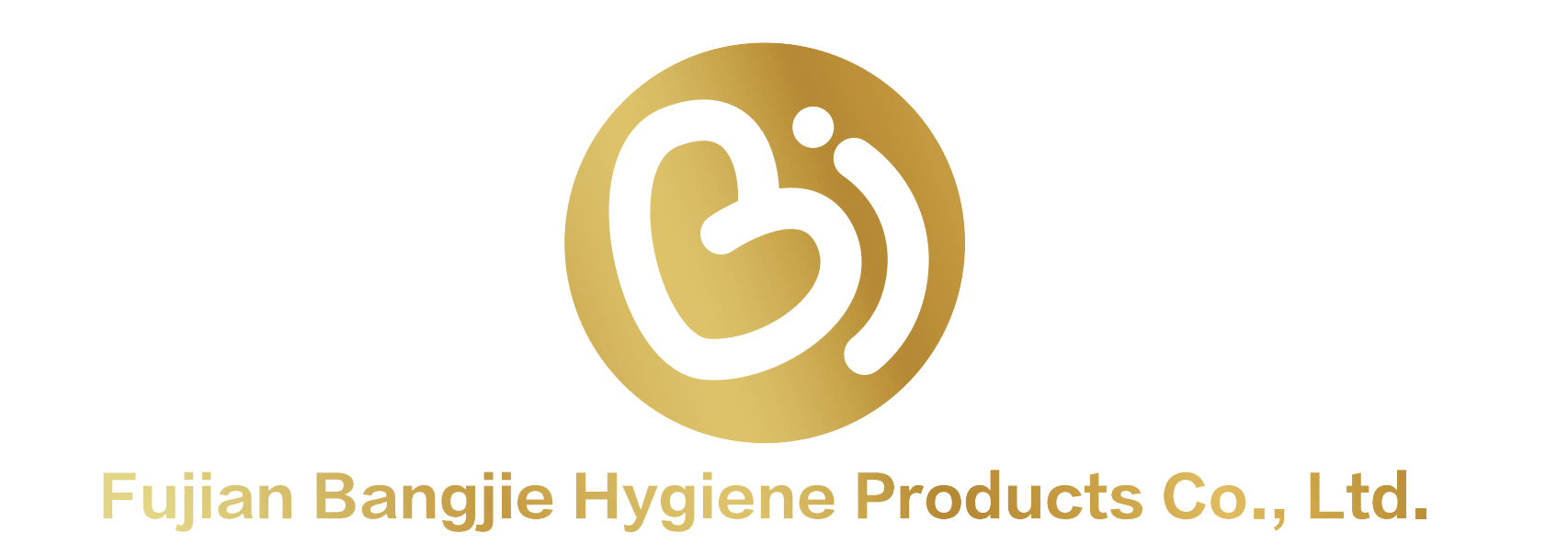HS 코드 분류에 대한 일회용 아기 기저귀의 크로스보더 이커머스 적용 사례
일회용 아기 기저귀에 있어 HS 코드란 무엇이며 그 중요성은 무엇인가?
HS 코드(Harmonized System)는 국제적으로 제품을 분류하기 위한 6자리 숫자 체계로, 전 세계 약 200개 국가에서 수출입되는 제품을 구분하는 데 사용됩니다. 잘 알려진 일회용 아기 기저귀의 경우, 코드 9619.00으로 올바르게 분류하는 것이 매우 중요합니다. 이 코드는 관세 부과 금액을 결정할 뿐만 아니라 통관 절차를 신속하게 진행시키고 글로벌 무역 규정을 준수하는 데도 도움이 됩니다. 잘못된 분류는 큰 문제를 일으킬 수 있습니다. 물류 과정에서 패키지가 창고와 매장 사이 어딘가에 멈춰 설 수 있고, 미국 세관 및 국경 보호국(CBP)의 최근 자료에 따르면 기업이 최대 제품 가치의 30%에 달하는 벌금을 부과받을 수도 있으며, 더 나쁜 경우 전체 선적이 정부 보관 창고에 영원히 사라지는 일도 발생할 수 있습니다.
글로벌 무역에서 6자리 통일 체계가 일회용 기저귀에 어떻게 적용되는가

HS 코드 구조는 다음과 같이 구성됩니다:
| 디지트 | 분류 수준 | 일회용 기저귀 예시 |
|---|---|---|
| 1-2 | 장(Chapter) | 96 (기타 제조품) |
| 3-4 | 제목 | 19 (위생/위생용품) |
| 5-6 | 품목(HS Subheading) | 00 (일회용 기저귀) |
이러한 표준화된 체계를 통해 관세 당국은 EU REACH 규정에 따른 재활용 불가능한 플라스틱 사용 제한 등과 같은 일관된 관세율 적용 및 규제 집행이 가능해집니다.
일회용 아기 기저귀의 흔한 오분류와 그로 인한 재정적 영향

언제 일회용 유아용 기저귀 위생용지 제품에는 4818번, 섬유품목에는 6307번으로 잘못 분류될 경우, 수입업자들은 약 5%에서 15%의 관세 오류를 자주 겪게 됩니다. 한 미국의 온라인 소매업체가 최근 기저귀 선적을 6307.90 코드의 '섬유 관리 제품'으로 잘못 분류했다가 약 15,000달러의 과거 관세 청구를 받은 사례가 있습니다. 요즘에는 올바르게 분류하는 것이 매우 중요합니다. 올바른 HS 코드인 9619.00을 사용하면 세관 당국을 만족시키는 데 그치지 않고, 기업이 변화하는 친환경 규제에 앞서 대응할 수 있도록 도와줍니다. 2024년을 향한 중국의 새로운 소재 규제 움직임을 보세요. 규정 준수는 이제 단순히 벌금을 피하는 것을 넘어 책임감 있는 경영의 일부가 되고 있습니다.
## Correct HS Code Classification: Identifying 9619.00 for Disposable Baby Diapers### The Standard HS Code 9619.00 for Disposable Baby DiapersDisposable baby diapers are classified under HS Code 9619.00 ("Sanitary towels and tampons, diapers and diapers for babies and similar articles, of any material") in most global markets. The World Customs Organization ([2023 HS Code Compendium](https://www.wcoomd.org "WCO HS Code Guidelines")) confirms this classification applies regardless of materials like superabsorbent polymer (SAP) or cellulose. Correct use of 9619.00 aligns with standard 5–7% duty rates across 87% of WTO member countries (Global Trade Atlas 2024).### Differentiating 9619 from Similar Codes: 4818 (Sanitary Paper) and 6307 (Other Textile Articles)Three codes commonly cause confusion:| HS Code | Product Scope | Diaper Relevance | Common Misuse Penalty ||---------|---------------|------------------|-----------------------|| 9619.00 | Diapers/Sanitary Articles | Correct Classification | N/A || 4818.90 | Sanitary Paper Products | Incorrect (e.g., facial tissues) | 10–20% duty surcharge || 6307.90 | Textile Articles | Incorrect (e.g., reusable cloth diapers) | 15%+ customs holds |### Material-Based Sub-Classifications Within HS Code 9619 for Disposable Baby DiapersWhile 9619.00 covers all disposable diapers, some countries require extended 8–10 digit codes based on composition:- SAP vs. cellulose core (U.S. requires 9619.00.2100 for SAP-based diapers)- Biodegradable materials (EU mandates 9619.00.3900)- Odor-control additives (Japan uses 9619.00.5000)### Country-Specific Variations in Classifying Disposable Baby Diapers Under HS 9619Mexico’s SAT authority ([2024 Classification Bulletin](https://www.sat.gob.mx "Mexico Customs Guidelines")) requires suffix .001 for diapers exceeding 400ml absorbency, while ASEAN nations apply 9619.00.00 uniformly. U.S. Customs’ 2023 ruling (HQ H318312) reclassified adult incontinence products but maintained infant diapers under 9619.00.해외직구 전자상거래에서의 일회용 아기 기저귀 규제 준수의 어려움
일회용 아기 기저귀 전자상거래 업체가 마주치는 통관 장애물
HS 코드 불일치로 인해 이커머스 판매자들은 11~15일의 지연을 경험하고 있습니다. 지역별 무역 분석에 따르면, 15%의 기업이 매년 SAP와 같이 잘못 분류된 자재로 인해 과태료로 수익을 잃고 있습니다. 신고된 중량(포장 포함)과 실제 제품 사양 간의 차이가 흔하게 발생하며, 이로 인해 중소기업(MSE)은 분쟁이 발생한 각 선적 건당 평균 7,200달러의 비용을 부담하고 있습니다.
일회용 아기 기저귀 국제 운송을 위한 라벨링 및 문서 요건
기저귀를 해외로 수출할 때 기업은 수출 목적지에 따라 다양한 라벨링 요건을 충족시켜야 한다. 각국에서는 제품의 흡수성, 라텍스 성분 유무, 생분해 여부 등의 정보를 요구한다. 유럽연합(EU)은 화학물질이 1% 이상 함유된 기저귀에는 CE 마크를 표시하는 것이 의무화되어 있으며, 미국의 경우 제품이 쉽게 연소되지 않도록 하는 규정에 중점을 두고 있다. 지난해 발표된 일부 연구에 따르면 기저귀 수출 물량의 약 3분의 1이 세관에서 반송되었는데, 이는 안전 서류가 미비하거나 라벨이 다국어 표기 요건을 충족시키지 못했기 때문이다. 또한 "친환경(Eco-friendly)"과 같은 마케팅 문구의 경우, HS 9619.00 분류 코드를 만족시키기 위해 제조사가 실제로 해당 성능을 입증할 수 있는 퇴비 분해 테스트 문서를 제시해야 한다. 규정 준수는 단순한 서류 작업이 아니라 국제 비즈니스 운영을 원활하게 할 것인지, 혹은 전 세계 항구에서 비용이 많이 드는 지연을 겪을 것인지를 결정하는 중요한 문제이다.
주요 시장에서의 분류 분쟁: 일회용 아기 기저귀 관련 유럽연합 및 미국 사례
2023년에 유럽연합(EU)은 중국산 일회용 아기 기저귀의 분류 방식에 있어 중요한 변경 사항을 적용했습니다. 이들 제품의 약 3분의 1이 기존 품목 코드 9619.00에서 6307.90으로 분류가 변경되었는데, 이는 예상보다 더 많은 직물 소재를 포함하고 있음이 밝혀졌기 때문입니다. 이로 인해 수입업자들은 갑작스럽게 최대 12~18% 높은 관세율을 적용받게 되었죠. 대서양 건너에서는 상황이 더욱 복잡해졌는데, 분류에 대한 분쟁의 절반가량이 기저귀 두께 측정 기준을 둘러싸고 벌어지고 있습니다. 두꺼운 제품은 위생용품(9619)으로 분류되는 반면, 얇은 제품은 직물(6307)로 분류되기 때문입니다. 상황은 2022년에 또 다른 전환점을 맞이했는데, 미국 세관 및 국경 보호국(CBP)은 대나무 섬유 기저귀를 항균 기능이 입증되지 않은 상태에서 품목 번호 9619.00으로 허위 표기한 소매업체들에 대해 약 450만 달러의 벌금을 부과했습니다.
실제 사례 연구: 일회용 아기 기저귀의 HS 코드 오류 및 해결책
사례 1: 잘못된 관세 분류로 인해 미국 판매자가 15,000달러의 과태료 부과
한 미국 온라인 소매업체가 일회용 아기 기저귀를 9619.00 코드가 아닌 4818번 위생용지 HS 코드에 등록했다가 문제가 발생했습니다. 정기적인 세관 검사에서 당국은 2023년 미국 세관 및 국경 보호국 자료에 따라 회사가 약 15,000달러의 체납세금과 과태료를 지불해야 한다는 것을 발견했습니다. 문제를 해결하기 위해 해당 기업은 기저귀가 비직조 섬유로 만들어졌으며 실제로 9619.00 분류에 해당함을 입증하는 문서를 제출해야 했습니다. 이 사례는 수입 규제를 다룰 때 위생 제품이 종이 재질인지 섬유 구조인지 정확히 아는 것이 얼마나 중요한지를 보여줍니다.
사례 2: 캐나다에서의 성공적인 재분류로 일회용 아기 기저귀 관세 30% 절감
캐나다의 수입업자가 일회용 아기 기저귀의 주요 기능이 위생용품이라는 점을 입증함으로써 HS 코드 6307(기타 섬유제품)에서 9619.00으로 재분류했습니다. 기술 문서와 WCO 가이드라인에 근거한 이 재분류를 통해 관세를 30% 절감할 수 있었으며(Canadian International Trade Tribunal 2022), 연간 8,500달러 이상의 비용을 절약할 수 있었습니다.
일회용 아기 기저귀의 HS 코드 불일치로 인한 해외 반품 사례에서 얻은 교훈
150개국의 국제 운송 데이터를 살펴보면 반품의 약 5건 중 1건은 HS 코드 오류로 인해 발생했으며, 이로 인해 평균적으로 매번 약 2,400달러의 비용이 발생했습니다. 많은 문제들이 각 국가별로 존재하는 특수한 규정들을 간과하면서 비롯되었습니다. 예를 들어, EU의 경우 자주 간과되는 엄격한 흡수성 기준이 있습니다. 사전에 조치를 취한 기업들은 실제 개선 효과를 경험했습니다. 일부 기업은 조기에 공식적인 BTI 판정을 받았고, 다른 기업들은 물류 담당 직원들의 교육에 투자했습니다. 이러한 노력의 결과로 불과 6개월 만에 반품률이 약 40% 감소했으며, 이는 정기적으로 국경 간 운송을 할 때 매우 큰 차이를 만듭니다.
전자상거래에서 일회용 아기 기저귀의 HS 코드 컴플라이언스 최적화 전략
일회용 아기 기저귀 운송 전 HS 코드 확인을 위한 모범 사례
국경 간 판매자는 다음의 3단계 확인 절차를 따라야 합니다:
- 제품 설명을 일치시켜야 함 장(CHAPTER) 96.19 (위생용품)은 조화화된 체계(Harmonized System)에 해당합니다.
- 수입국 관세 데이터베이스(예: 미국 세관 및 국경 보호국(CBP)의 2024 HS 코드 개정 안내서)와 대조하여 검증하십시오.
- 관세사의 분류 도구를 사용하여 매월 감사를 수행하십시오.
데이터에 따르면 일회용 제품의 22% 아기 기저귀 가 EU 수입 시 분류 불일치로 인해 지연되는 것으로 나타났습니다(Global Trade Review 2023).
일회용 기저귀 정확한 분류를 위한 구속력 있는 관세 정보(BTI) 활용
BTI 결정은 분류에 있어 법적 확실성을 제공합니다. 일회용 아기 기저귀의 경우:
- EU의 BTI 결정에는 약 42일 이 소요되며 정확도는 98%입니다.
- 미국의 구속력 있는 통관 결정은 520달러의 비용이 들지만 감사 위험을 67%까지 줄일 수 있습니다.
분쟁에서의 성공률이 89%임에도 불구하고, 중소기업(SMEs) 중 단지 12%만이 BTI를 활용하고 있는 것으로 나타났습니다. 2023 BTI 활용 보고서 .
전자상거래 플랫폼에 자동 HS 코드 검증 통합
| 자동화 도구 | 정확도 비율 | 통합 시간 |
|---|---|---|
| AI 분류기 | 94% | 2~4주 |
| 규칙 기반 시스템 | 87% | 6~8주 |
| 주요 플랫폼은 이제 일회용 아기 기저귀 판매자들의 수작업 오류를 73% 줄이기 위해 제품 등록 인터페이스에 직접 HS 코드 검증 기능을 내장하고 있습니다. |
일회용 아기 기저귀 무역에 특화된 통관 대리인과 협력하기
전문 대리인 HS 96장 전문성 다음과 같은 주요 이점을 제공합니다:
- 소재별 분류(예: SAP vs. 셀룰로오스)에 대한 실시간 업데이트
- 자유무역협정(FTA) 분석을 통한 관세 최적화
- 위생용품 분류 분쟁 해결 지원
2024년 조사에 따르면 성능이 우수한 기저귀 수출업체 중 58%가 일반 물류 제공업체보다는 섬유/물품 전문 대리인과 협력하고 있는 것으로 나타났습니다.
자주 묻는 질문 섹션
HS 코드란 무엇인가?
HS 코드(Harmonized System code)는 국제 무역에서 제품을 분류하기 위해 사용되는 6자리 숫자입니다.
일회용 아기 기저귀의 HS 코드 9619.00이 중요한 이유는 무엇인가요?
HS 코드 9619.00은 일회용 아기 기저귀의 정확한 분류 및 관세율 적용을 보장하여 통관 절차 및 법적 규정 준수에 기여합니다.
기저귀가 다른 HS 코드로 잘못 분류된다면 어떤 일이 발생하나요?
잘못 분류될 경우 금전적 제재, 운송 지연, 그리고 높아진 관세율이 적용될 수 있습니다.
기업이 일회용 아기 기저귀를 잘못 분류하는 상황을 피하려면 어떻게 해야 하나요?
기업은 검증 절차를 사용하거나 통관 대리인과 협력하고 구속력 있는 관세 정보(BTI)를 활용하여 정확한 분류를 할 수 있습니다.


